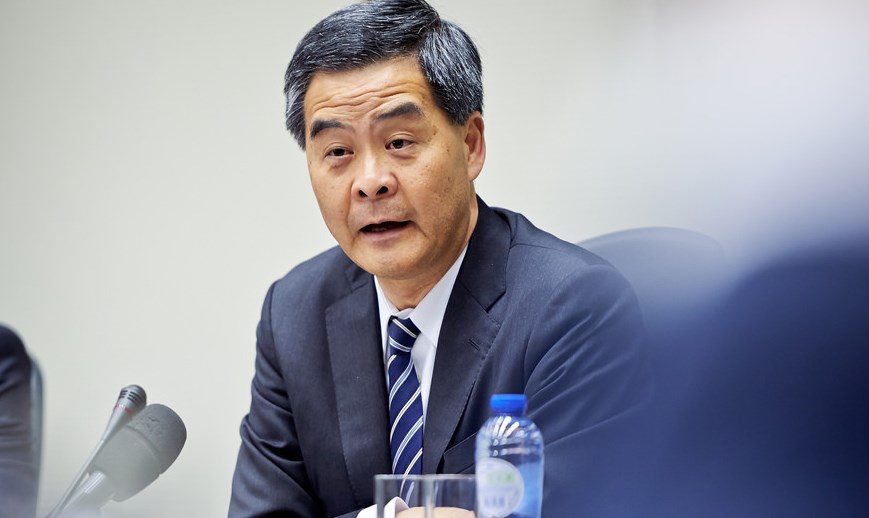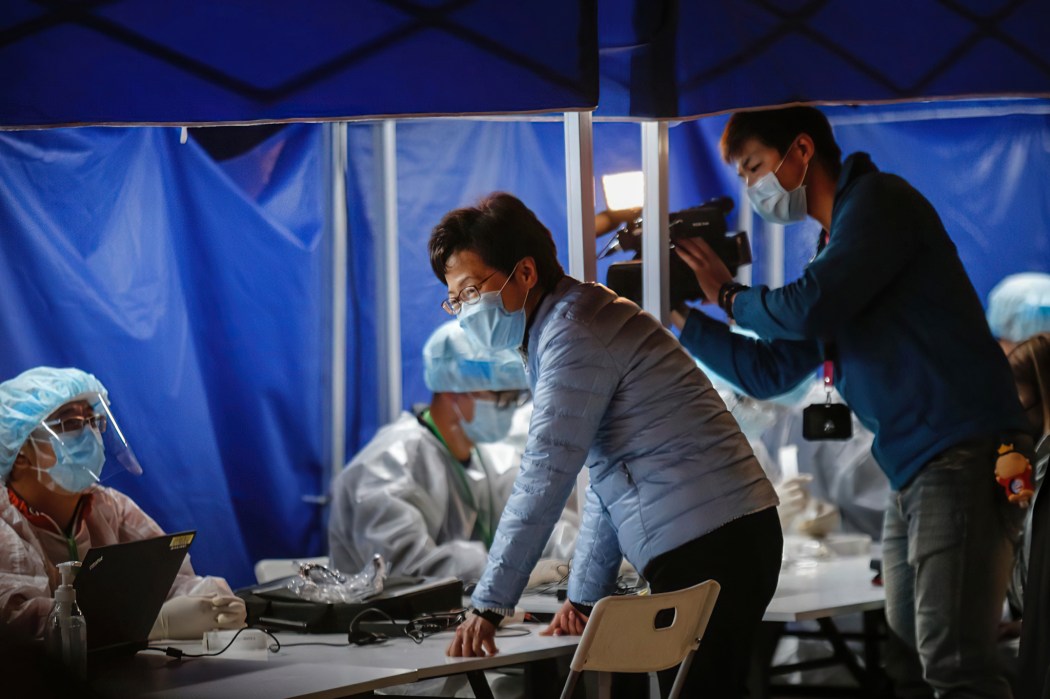Covid-19 lockdowns. Former pan-democratic politicians and activists rotting in jail. The city’s flagship anti-government newspaper forced to shut down by a police force on steroids.
And all the while it appears “National Security” has replaced “World City” as Hong Kong’s new catchphrase.
Things can’t possibly get any worse. Right?

Not so fast. Chief Executive Carrie Lam Cheng Yuet-ngor, who has overseen and in good part orchestrated this disaster, recently announced that she would present her “vision” for the next five years in her October policy address, signalling that she may well be gearing up for re-election. The winner will be determined by a newly revamped election committee tightly controlled by the powers that be in Beijing.
So things could go from “Oh my God, this is so bad” to “Damn, this is even worse.”
The supreme arrogance of Lam even hinting at such a possibility after the unmitigated fiasco of her first term is yet another stinging slap in the face of the Hong Kong people, with whom, according to one opinion poll after another, she remains spectacularly unpopular.
As Lam took her place as CE in July 2017, it was pretty much universally assumed that she would be a marked improvement over her predecessor Leung Chun-ying, whose combative style and abrasive personality made him the least popular CE since the 1997 handover from British to Chinese rule. But Lam’s extradition madness and stubborn, tone-deaf resistance to massive, at times violent, protests against her government in 2019 and 2020 earned her a pariah status in the city she is supposed to lead.

And now the woman who hammered the nails into the coffin of Hong Kong’s autonomy suggests she may seek another term? Please!
It’s tempting in these dark times to harken back to the sometimes heady first 10 years of the handover, when mainland officials in the city’s liaison office made a deliberate effort to stay mum and out of public view and many Hongkongers touted their special autonomous status in a country that was otherwise muzzled by central authorities in Beijing.
One country, two systems was alive and well, although rumblings of dissatisfaction among the Chinese leadership had started to grow in tandem with increasing demands for democracy in Hong Kong.
Then, in June of 2014, came Beijing’s unprecedented white paper lamenting that “many wrong views are currently rife in Hong Kong” and asserting “comprehensive jurisdiction” over the territory.
The failed 79-day pro-democracy Occupy protests would follow, after which “semi-autonomous” became the operable phrase for describing the city’s status under Chinese sovereignty. Many of the hundreds of thousands of disappointed and disillusioned umbrella-toting demonstrators who took to the streets during that time may have objected to even that scaled-down characterisation as an exaggeration.

Whatever the truth was then, no one except Lam and her ministerial lackeys — now fully in thrall to a thoroughly awakened and all-powerful liaison office — can deny what is happening today. In the wake of the millions-strong 2019-2020 anti-government protests and the hardline national security law that followed, Hong Kong’s autonomy has been whittled down to the bone.
In just over a year, a free-wheeling society with ample space for debate accommodating all voices has become, despite repeated official denials, a virtual police state that actively silences the voices it doesn’t want to hear.
And, of course, Covid-19 has served as a great ally in the Lam administration’s quest to stifle dissent in the city. It has been used as an excuse to ban the annual candlelight vigil honouring the hundreds if not thousands of pro-democracy demonstrators killed by the Chinese military in Tiananmen Square on June 4, 1989. Covid has also been cited to quash the perennial July 1 National Day protests that traditionally brought tens of thousands into the streets to air a variety of grievances against both the local and central governments.

It’s a sorry state of affairs, and there is plenty of blame to go around. But the ultimate responsibility rests with Lam, our putative leader who led us to the edge of the abyss and then, instead of turning back and saving Hong Kong, took a suicidal leap and dragged all of us along with her.
She even cried about it; we all did.
But, at this point, in a city where everyone knows the CE’s office is a poisoned chalice, our failed chief executive has as of yet no apparent challenger other than her failed predecessor, whose Facebook page is lately full of wannabe-CE musings and pronouncements about the state of affairs in Hong Kong.
Talk about the lesser of two evils.
Support HKFP | Policies & Ethics | Error/typo? | Contact Us | Newsletter | Transparency & Annual Report | Apps
Help safeguard press freedom & keep HKFP free for all readers by supporting our team

LATEST FROM HKFP
HKFP has an impartial stance, transparent funding, and balanced coverage guided by an Ethics Code and Corrections Policy.
Support press freedom & help us surpass 1,000 monthly Patrons: 100% independent, governed by an ethics code & not-for-profit.










